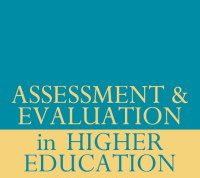Welcome! In the above sections we explain how to use technology for feedback, what to include, why this approach has been proven to be effective, and link you to resources to get started. We hope you find this site useful in using technology in your student feedback.
How do you actually create feedback using assessment technologies? Luckily it’s not difficult: we’ve had many reports that educators found it easier than writing formal feedback! Below we explore the methods and tools available to educators.
Getting started
There are various technologies that can be used to provide assessment feedback, such as audio recordings, video recordings, screencasting and inking. Click below for more information on these modalities.
Audio Recordings
Video Recordings
Screencasts
Inking
Tips for using inking
What do we need to include in our technology assisted feedback? Below we explore a design to work with to structure your feedback to ensure it provides the greatest benefit.
Regardless of which technologies are used, the structure of the recording can remain the same. In general, the elements shown below are recommended. For more information download a printable version with more detail and examples.
Structural Elements of Feedback Recordings

Advice for structuring recordings
When using technology to record assessment feedback, it is not necessary to examine every element of the students’ work. Instead, aim to provide constructive comments that will strengthen students’ understanding of the field and their future assessment tasks. The videos below contain examples and tips for how to structure recordings.
Structuring a dialogic approach
Using technology to provide assessment feedback has many benefits for both students and educators. Below we explore how use of technology enables educators to implement the principles of effective feedback.
Research indicates that there are eight principles of effective assessment feedback. Trying to meet these principles using only text-based feedback can be complicated and time-consuming, particularly in large class contexts. However, using technologies to create assessment feedback may assist educators in doing so.
Eight Principles of Effective Assessment Feedback
Below we have linked resources for you to learn more about creating assessment feedback using technology. More will be added over time.
Our report
Our Report

Quick Reference Guides
Click on the links below to download:
Peer-reviewed Research
Our Research
Research from Others
Presentations
Media
Contact the research team
If you would like to get in touch with us, please email michael.henderson@monash.edu.
This project has been a passion for Professor Michael Henderson and Associate Professor Michael Phillips. In recent years we have been joined in our ongoing mission by Dr Tracii Ryan. Together we seek to further improve our understanding of the how, what, and why of digital enabled feedback.


















